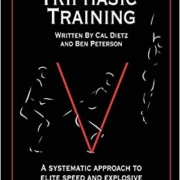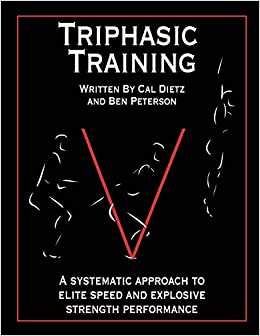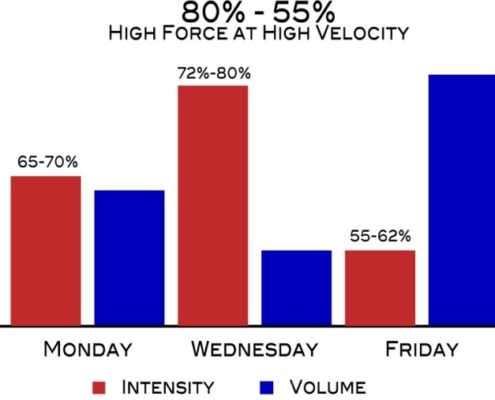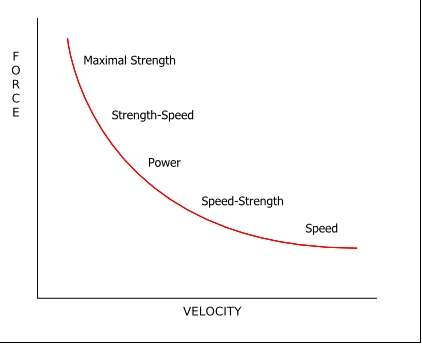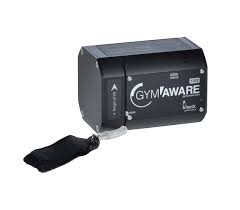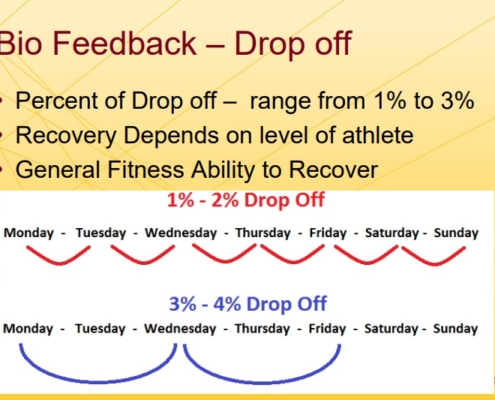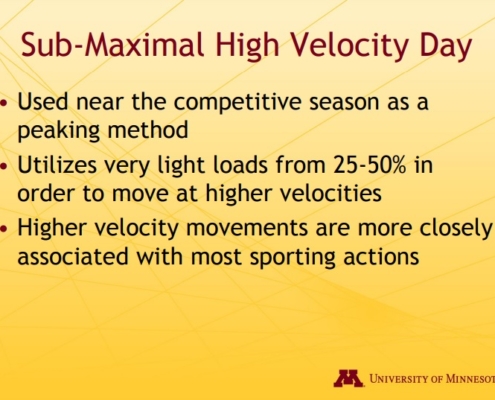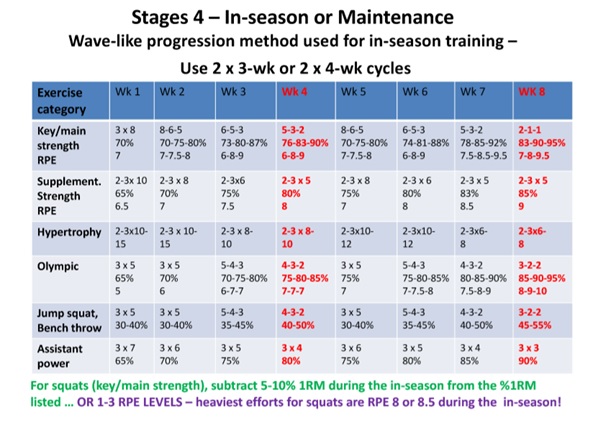My thoughts on the Triphasic Method – Part 2
This is a follow up post, you can read Part 1 here which focuses on the Block periodisation model used in Triphasic training.
The triphasic method is only part of the entire training system Cal uses; the triphasic method refers to the ‘strength’ phase (also known as the ABOVE 80 block), but there is also a ‘power’ block (55-80) and a ‘speed’ aka ‘peaking’ block (LESS THAN 55). All in all this represents a period of approximately 12 weeks from start to finish (not including deload weeks).
In this Part 2 we will focus on the loading parameters used in the triphasic method.
Below is a intro to some of the topics/statements made that caught my attention, so if they interest you too then you’ll want to keep reading:
Strength & Power
- The key to improving sport performance isn’t about who is the strongest; it’s about producing more force in less time- who has the narrowest V wins!
- This results when an athlete can absorb more force eccentrically- meaning the body can’t generate more force than it can absorb maximally
- The neurological system is stimulated at its highest level at loads that attain the highest power outputs
- The most important component of power, in relation to sports performance, is time
- Strength comes before power- don’t put the cart before the horse
? The general principle of having a strength base is nothing new but the focus of attaining high power outputs throughout the strength block was a new concept for me ?
Loading parameters
- Loads chosen for strength block would ordinarily correspond with an RM of 4RM, 2RM and 6RM respectively.
- Loading parameters within strength blocks are focused on preservation of power output – therefore to ensure the quality of work remains high, sets in the ABOVE 80 BLOCK are limited to singles/doubles for medium day (82-87% 1RM), singles for high intensity day (90-97% 1RM) and three to four reps for low intensity day (75-80% 1RM).
- In the 55-80 BLOCK it is possible to train high force at high velocity- due to addition of a powerful SSC!
- In the BELOW 55 BLOCK sets are based on time – as opposed to performing a prescribed number of reps
? Probably the last points on the strength loading parameters were the ones that really stood out for me so we will cover this in a little more detail below ?
One thing to state having read the book, it is clear that the three phases I have mentioned (strength, power and speed) follow a GPP phase which is not discussed in the book. So I can’t really comment on the specifics of what Cal might recommend to do prior to starting triphasic training.
Loading Parameters
One of the main principles is to ‘stress the body optimally,’ meaning work must be completed with a purpose and focus is on quality of work, with an emphasis on speed of movement as this is closer to the sports demands.
When training at high-speed, intensive loads are accompanied by the largest changes in the nervous system apparatus of muscle – CNS, myelination–sarcoplasmic reticulum (site of calcium release, facilitates muscular contraction, and the myoglobin and creatine phosphate contents – So it’s important to train with High Speed Methods.
Furthermore, control of the programming through – Intensity and Duration should be the focal point of the program for that day. This is controlled by having variable Intensity throughout the week (strength & power blocks), and Timed sets for the speed focused blocks.
The Intensity variation is the focal point of the Triphasic ABOVE 80 Strength block.
Above 80 Block – Triphasic Method
The Triphasic Method is based on performing 2-3 weeks each of eccentric, isometric and then concentric based training.
The intensity is undulated with the principle that Monday is medium intensity-medium volume (the ‘performance’ zone)- Wednesday is high intensity low volume ‘above performance’ zone- and Friday is low intensity-high volume (below performance zone).
The ECCENTRIC and ISOMETRIC work will take place on a Monday (DAY 1) and Friday (DAY 3):
Block 1
- Day 1 = ECCENTRIC (5-6 seconds 1-3 reps, 2-4 sets) –> 82-87% 1RM
- Day 2 = Concentric (Reactive 1 rep, 1-4 sets) –> 90-97% 1RM
- Day 3 = ECCENTRIC (6-7 seconds 2-4 reps, 2-4 sets) –> 75-80% 1RM
Block 2
- Day 1 = ISOMETRIC (2-3 seconds 1-3 reps, 4-5 sets) –> 82-87% 1RM
- Day 2 = Concentric (Reactive 1 rep, 1-4 sets) –> 90-97% 1RM
- Day 3 = ISOMETRIC (3-4 seconds 3-4 reps, 4-5 sets) –> 75-80% 1RM
Block 3
- Day 1 = Concentric (2-3 reps, 3-4 sets) –> 82-87% 1RM
- Day 2 = Concentric (Reactive 1 rep, 1-4 sets) –> 90-97% 1RM
- Day 3 = Concentric (3-4 reps, 3-5 sets) –> 75-80% 1RM
The running volume could also follow this pattern:
- Day 1 = Train at performance Zone – sprints over 15 sec, or under 10 sec with recovery under 20 sec
- Day 2 = Under Distance Training – Short duration High Stress, sprints under 10 sec and full recovery
- Day 3 = Longer Distance Running / Tempo work / Bodybuilding
⭐️ The key thing here is that Loading parameters within strength blocks are focused on preservation of power output – therefore to ensure the quality of work remains high, sets in the ABOVE 80 BLOCK are limited to singles/doubles for medium day (82-87% 1RM), singles for high intensity day (90-97% 1RM) and three to four reps for low intensity day (75-80% 1RM). This allows the loads to be lifted explosively as they would ordinarily correspond with a 4RM, 2RM and 6RM.
This also allows gives the athlete opportunity to recover from Monday session so that they can attack the midweek session with highest intensity. This was a game changer for me because everything I have learnt until now about the goal of strength training is to maximise motor unit recruitment, which we do by working at above 85% 1RM, as this provides time for a muscle to recruit its high threshold motor units.
⭐️ Usually with a traditional strength programme if you are a novice working up to a 5RM for the first time, you might follow a programme with a squat in the programme 2-3 times a week and each week is building up to 85% 1RM over 4 weeks (75–>80–>82.5–>85%). However, Cal states that with traditional strength methods the motor units are fatigued before the completion of the movement, resulting in decreased velocity of the bar and a lower power output.
The Triphasic programme uses loads corresponding to 4RM, 2RM and 6RM respectively so the loading parameters are clearly above the 5RM (85% 1RM) intensity level but the focus is on maintaining explosiveness. In my opinion the triphasic programme is suitable for someone who has probably been through several traditional strength cycles prior to the Triphasic method to build up their 5RM and 3RM and prepare for the heavier loads. It wasn’t mentioned in the book but I believe there is a SUPRA-MAXIMAL version of the loading which is reserved for Advanced athletes. Again, I can’t comment on this as it wasn’t mentioned in the book but there is definitely strong research for supra-maximal loading, and perhaps I can go into that in another post.
- Day 1 = 110-120%
- Day 2 = 90-97%
- Day 3 = 105-110%
Progression of Loading Parameters Week 1-3:
The triphasic method can be applied for 2-3 weeks for each block. In general it is recommended to build the intensity from the low end of the range to the high end of the range over the 2-3 weeks.
For example:
DAY 1
- Week 1 = 82.5%
- Week 2 = 85%
- Week 3 = 87.5%
DAY 2
- Week 1 = 87.5%
- Week 2 = 90%
- Week 3 = 92.5%
DAY 3
- Week 1 = 75%
- Week 2 = 77.5%
- Week 3 = 80%
Final considerations:
⭐️ When programming for assistance work, don’t worry about the tempos, as additional emphasis on eccentric or isometric work outside of the main lift will exhaust the neurological system of the athlete. All assistance work should be performed within the loading parameters for that day, e.g. 82-87% 1RM or 75-80% 1RM
⭐️ You should change up the means you use from DAY 1 to DAY 3 by selecting a training means on DAY 3 that would be considered a less stressful version of the compound exercise chosen on DAY 1. So for example, if you chose a Barbell bench press on DAY 1 you could choose a Dumbbell bench press on DAY 3. This is because the athlete and their nervous system are fatigued by this point and aren’t able to handle high intensities any longer.
⭐️ You can change up the means you use from block to block so that your athletes don’t get bored coming in and doing the same thing week in week out. So for example, the athlete could perform a box squat in block 1, a box squat with bands in block 2 and a conventional back squat in block 3.
55-80 Power Block
The Intensity variation is the focal point of the Triphasic 55-80 Power block as well. But there is an extra layer of loading parameters – biometric measurements- to monitor training quality. More on this in a bit. Remembering that the power suffers after the third repetition of an exercise, the only sensible answer is to end the set and save energy for a high quality second set.
Now that the load is lighter a lot of coaches make the mistake of assuming that just because an athlete can do more reps with less weight, they should. Wrong! According to Cal, emphasis must always be placed on quality, high level neural work.
⭐️ I would encourage you to read pages 242-258 yourself as Cal does a terrific job of explaining how it is possible to work at high force at high velocities. Cal mentions that the idea that force and velocity are dependent variables (meaning as Velocity goes up Force goes down) is correct in ISOLATED muscle tissue. The original experiment by A.V Hill (1953) showed that as they increased the force applied to the muscle, the rate of muscle shortening (velocity) decreased. Thus the hyperbolic curve was born.
”However, when looking at explosive, dynamic movement, its application falls short. The curve failed to include one HUGE variable that is pertinent to sports performance – the series elastic component of dynamic contraction. When you include the extra energy by the stretch shortening cycle (SSC) during full speed dynamic movement. When lifting moderate loads (55-80 percent), the addition of a powerful SSC makes it possible to develop high levels of force at high velocities.
According to the hyperbolic curve the highest power outputs would occur somewhere around 50 percent of the athlete’s 1RM. This is a classic example of taking research and prescribing it to a population that it is was never intended for – athletes. You have to recognise that the force-velocity curve as you know it is a romanticized view of how the body works. It ignores the impact of the SSC as well as neural inhibition, motor unit recruitment, and the stretch reflex. Sure, this way is simpler to understand and programme for, but it won’t maximise the power producing abilities of your athlete.”
The work by Dr. Paavo Komi in 2000 is really insightful and you can read the full article ? Komi (2000) Stretch-shortening cycle – study of normal and fatigued muscle
It shows that in vivo muscle contractions (meaning live tissue), the hyperbolic curve actually shows a parabolic shape. Instead of bowing inward, the line bows outward. The implications of this are that it is possible to produce high forces at high velocities. As stated in Triphasic book, this explains why Dr.Hatfield was able to demonstrate that training with 55-80 percent of an athlete’s 1RM was optimal for retaining the highest power outputs and teaching an athlete’s body to develop high rates of force development.
Getting back to the practicalities, the Intensity variation is the focal point of the Triphasic 55-80 Power block as well. But there is an extra layer of loading parameters – biometric measurements- to monitor training quality. Biometrics is the science of measuring and analysing biological data- in this case measuring fatigue with ‘velocity drop off.’ The gold standard is the Tendo unit. They measure the bar speed of every rep. At APA we have a Gymaware unit.
A simple inexpensive way to simulate the biometric measure of the Gymaware unit is the ”timed-set drop off” method. You begin a stopwatch precisely when the first movement downwards begins. The coach then stops the watch exactly after the last rep is locked out.
Cal uses a 3-7 percent drop off when using hand-timed biometric measures because there is a greater range of variability by the timer. If using the tendo unit he will use a lower percentage as the cut off points (1-3 percent). The drop off percentage used is dictated by the amount of recovery time the athlete has before returning to similar forms of stress.
Keep in mind the drop off is based on the athlete’s best set. It isn’t uncommon to see an athlete get better times three to four sets into the exercise due to potentiation effects. This form of biometrics is simply one way in which a coach can use the athlete’s readiness to gauge how much they will do that day to ensure that optimal fatigue is applied and maximal gains achieved.
This method is best applied on the max effort day where you are doing single reps. The idea is that [in theory] if you are squatting for example on Monday, and you want to do it 24 hours later then using the Tendo unit you would cut the sets when his bar speed on the singles dropped by 1-2%. This strategy might be used if you are trying to get a strength gain where you need to train the motor skill to get better and do it as often as you can.
A 2-4% drop off works when you plan to return to the same stress 48 hours later (Monday –> Wednesday) and as much as 5-6% when you plan to return to it 72 hours later (Monday –> Thursday).
In total you will do 4-5 sets and 1-3 high quality reps per set on the high intensity (72-80%) day. However, if are using the tendo unit it may be you do many more than 1-3 reps if you are doing them as single clusters AND the athlete has a high work capacity and can keep the velocity within 2-4% drop off.
Cal described one of the most amazing results he had ever seen where an athlete with a large work capacity potential performed his training sets for roughly four sets of squats at a body weight of 205 pounds. He was using 295 pounds and would do one repetition, rest 15 seconds, and do another repetition. He achieved a 3-4 percent drop off as the guideline and was able to do 31 repetitions in one set and not drop-off more than 3 percent of his bar speed during the set. That particularly day, the athlete did over 70 repetitions of the back squat at 295 pounds at a very high velocity.
Below 55 Speed Block
- Day 1 = 35-40%
- Day 2 = 45-55%
- Day 3 = 25-30%
All 3-5 sets. Reps are based on Time.
There are actually several methods that Cal uses in this phase- all related to something called ‘Antagonistically Facilitated Specialised Method (AFSM)’ which I will probably cover in a separate blog. But as it relates to the squat it is known as ‘High velocity strength training,’ with loads less than 55% of 1RM.
The main loading parameter focuses on ‘Timed Sets.‘ You are training specifically for the competitive event and you select time periods that match with the energetic demands of the sport- training at, slightly above and slightly below competition time.
Give athletes the lowest dose of medicine you can until it stops getting them better! At that point you need to up the dosage!
I hope you found this article useful.
Remember:
- If you’re not subscribed yet, click here to get free email updates, so we can stay in touch.
- Share this post using the buttons on the top and bottom of the post. As one of this blog’s first readers, I’m not just hoping you’ll tell your friends about it. I’m counting on it.
- Leave a comment, telling me where you’re struggling and how I can help
Since you’re here…
…we have a small favor to ask. APA aim to bring you compelling content from the world of sports science and coaching. We are devoted to making athletes fitter, faster and stronger so they can excel in sport. Please take a moment to share the articles on social media, engage the authors with questions and comments below, and link to articles when appropriate if you have a blog or participate on forums of related topics. — APA TEAM

